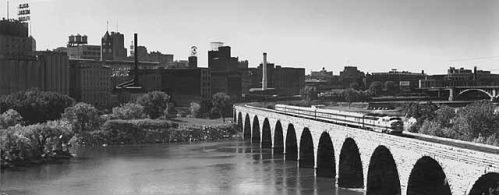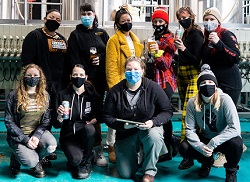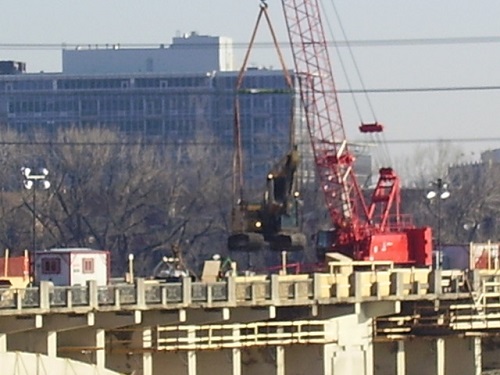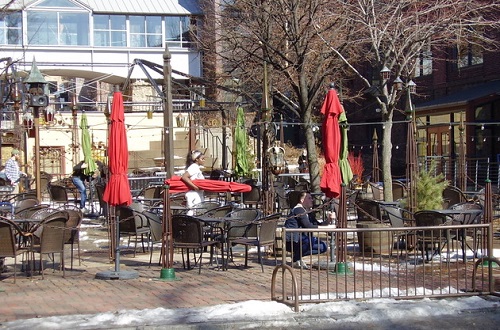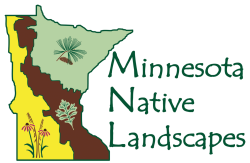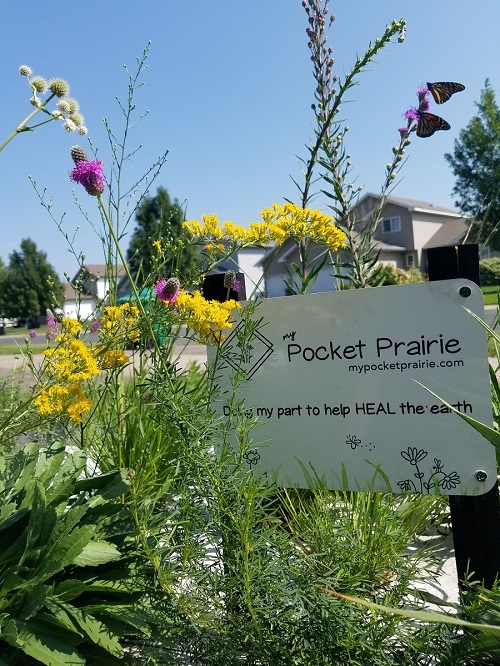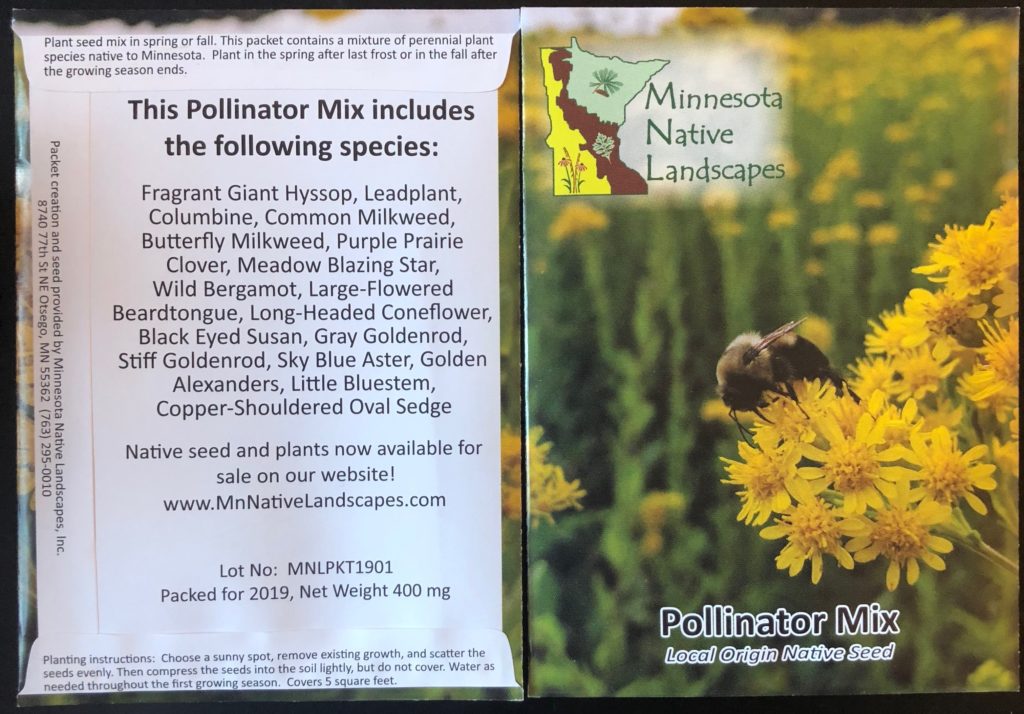Article by Becky Fillinger
 Erin Horne McKinneyMeet the new CEO of WomenVenture – Erin Horne McKinney. She is passionate about social impact, equitable entrepreneurship, and inclusive innovation - and brings all of that to bear in her leadership at WomenVenture. We talked to Erin about the history of WomenVenture, success stories and how we all may participate in their important work.
Erin Horne McKinneyMeet the new CEO of WomenVenture – Erin Horne McKinney. She is passionate about social impact, equitable entrepreneurship, and inclusive innovation - and brings all of that to bear in her leadership at WomenVenture. We talked to Erin about the history of WomenVenture, success stories and how we all may participate in their important work.
Q: Congratulations on your appointment as CEO of WomenVenture! Please tell us the history of WomenVenture.
A: WomenVenture is the result of the 1989 merger of CHART and Women’s Economic Development Corporation (WEDCO), the former founded in 1977 to provide training for women re-entering the job market or negotiating career transitions, and the latter founded in 1981 to help women develop and expand entrepreneurial ventures. In 2012, WomenVenture streamlined its strategic vision to focus solely on supporting women entrepreneurs as they start and expand businesses.
WomenVenture has been empowering women in the Twin Cities metro area to achieve economic success through small business ownership for 44 years, providing more than 106,000 women with the tools and resources they need to run a profitable business. Although all are welcome in our programs, we focus on BIPOC women and women from low-income households.
WomenVenture is one of only three Women’s Business Centers in Minnesota, as designated by the US Small Business Administration (SBA). We are part of a network of more than 100 centers across the country designed to level the playing field for women entrepreneurs who face unique obstacles in the world of business. We ensure that critical resources are available to all women entrepreneurs, and specifically those who are economically or socially disadvantaged.
The secret to an entrepreneurial woman’s success lies in WomenVenture’s four pillars: training, 1:1 business advice, access to loan capital and a community of support.
WomenVenture’s comprehensive training programs serve small business owners of all types, from those running part-time side hustles to robustly profitable owners positioned for exponential growth.
We have several business consultants on staff to help clients overcome hurdles, and have a network of more than 200 committed, skilled professionals who volunteer to provide business advice and mentorship tailored to women business owners.
WomenVenture is a microlender, with $2,000 to $50,000 in loan capital available for small business owners who want to start or grow a business. Throughout the life of the loan, clients can access WomenVenture’s mentorship program and business advice services free of charge.
Q: Why do you believe that supporting women and their small businesses is important?
A: Women-owned businesses are the fuel that fires the US economy. We are increasingly reliant on the work and devotion of these women who are providing the jobs and services that their local communities need, yet female founders still face unique challenges. Women own 40% of small businesses in the US today but are only able to access 4% of small business loans through banks, 4% of government contracts, and 7% of venture capital. Last year, 1,821 women-owned businesses were opened every day, and 64% of those were started by women of color. Women, particularly women of color, don’t have the same support networks or assets that their male counterparts have.
It is vitally important to us that we help women succeed as business owners. We exist to provide the education, support and access to funding business-owners need to run profitable businesses that pay living wages.
Q: Do you have partners in your important work?
A: We have a variety of wonderful partners. We partner with libraries and community centers to deliver training, we partner with MN Deptartment of Employment & Economic Development and MnDOT, as well as the City of Minneapolis, counties, foundations, corporations, banking partners and other women’s organizations. Each one contributes to our mission, whether they are hosting training sessions, donating resources or contracting with us for services. We also work with the other economic development organizations in the Twin Cities, partnering on loans for small businesses and referring clients to each other to ensure the business owner is served by the organization that is the best cultural fit for them.
Q: Has the SBA noticed what you're doing?
WomenVenture is fortunate to have a strong relationship with the SBA district office. We represent SBA as a primary resource partner.
As a designated Women’s Business Center, we are funded in part by the SBA. We are also an SBA microlender, which means we can lend up to $50,000 to new and existing businesses within the 16-county Twin Cities Metro Area.
The SBA relies on us to provide help and guidance to SBA loan clients, so we partner with them regularly and speak to our local Minneapolis office often! Last year, we were fortunate enough to win SBA’s Women’s Business Center of Excellence for the Midwest Region award.
Q: Could you please tell us a few success stories?
A: I’m pleased to tell success stories.
Hour Kids Child Care
 Kristinah DvorakBetween motherhood and being a full-time student at a university, Kristinah Dvorak knew there was a need for flexible, reliable childcare in the Twin Cities. Her solution was a center that took children in on a walk-in basis with availability by the hour, and with that Hour Kids Walk-In Childcare was born. When she began voicing her doubts, WomenVenture client and past award winner Angel Rogers gave her the boost of confidence she needed and referred her to WomenVenture.
Kristinah DvorakBetween motherhood and being a full-time student at a university, Kristinah Dvorak knew there was a need for flexible, reliable childcare in the Twin Cities. Her solution was a center that took children in on a walk-in basis with availability by the hour, and with that Hour Kids Walk-In Childcare was born. When she began voicing her doubts, WomenVenture client and past award winner Angel Rogers gave her the boost of confidence she needed and referred her to WomenVenture.
At WomenVenture, Kristinah took the Guided Business Plan course and later received a loan from WomenVenture in December 2017, which allowed her to purchase the Hour Kids location in Eagan. Since then, Hour Kids has found immense success and popularity with parents in the Twin Cities metro. Kristinah has trademarked the phrase ‘walk-in childcare’ and is planning to provide after-school programming in the future.
 Lisa Lounsbury (right)
Lisa Lounsbury (right)
Art Lab Rx
Certified marriage and family therapist Lisa Lounsbury believes art is for everyone. As a professional artist and group art facilitator, she understands the power art holds. Combine art with therapy, and transformation can happen – but only if clients can get to their art therapy appointments. That’s where Art Lab Rx and Lounsbury’s art therapy bus come in.
Lounsbury combined her artistic skills and experience as a certified therapist to create an art therapy practice, Art Lab Rx. In November 2018, with the help of a business loan from WomenVenture and Cherokee Bank, art bus Maggie, a mobile art studio housed in a specially designed coach bus, was funded. Shortly thereafter, Maggie’s design was completed, and the art bus was open for business. “One of the barriers for clients was getting to the appointment. Many people had trouble with transportation. Now we can bring art therapy to where our clients need it,” says Lounsbury.
Scrapbusters
 Devi JamesDevi James, owner of Scrapbusters and daughter of an entrepreneur in her home country of Guyana, always knew she would be a business-owner eventually.
Devi JamesDevi James, owner of Scrapbusters and daughter of an entrepreneur in her home country of Guyana, always knew she would be a business-owner eventually.
After she finished college and worked in accounting for a few years, she decided it was time to follow her dream. That’s when she bought Scrapbusters, a demo and junk removal company. Devi was up for the challenges of business ownership: learning new skills, becoming a project manager, and successfully making in-roads into a male-dominated world.
With the help of WomenVenture’s classes and a small business loan, Devi’s business expanded from a staff of 2 to 20, and she recently moved into a new, larger location.
We have so many stories of client successes on our website, where you can watch their videos: https://www.womenventure.org/success-stories.html.
Q: Does your organization have a need for volunteers? If so, how may we participate?
Yes! In order to run our programs each year, we rely on a strong group of 200 professionals who volunteer their time and expertise to help emerging and existing entrepreneurs be successful. There are three main volunteer opportunities at WomenVenture:
• Trainer - Teach a WomenVenture course or session. Curriculum provided.
• Mentor - Provide advice on business area of expertise in 1:1 consultation meetings to WomenVenture loan clients and course participants.
• Expert Advisor - Support clients through the Small Business Essentials course. Help hold clients accountable to their goals of successfully completing the course and creating a business plan, help clients problem solve.

If you are interested in volunteering, check out our website. Join a Volunteer Information Session to find out more. If you choose to volunteer with us, we will provide volunteer training and orientation.
Q: How may we follow your news?
A: You can sign up for our newsletter on our website and choose “Join our Mailing List” at the bottom of the home page. And you can follow us on Facebook, Instagram, LinkedIn and Twitter for regular updates.
 Thursday, March 11, 2021 at 8:20AM |
Thursday, March 11, 2021 at 8:20AM |  Becky Fillinger |
Becky Fillinger |  Yasameen Sajady
Yasameen Sajady

 Q: Why did you name your company Maazah?
Q: Why did you name your company Maazah? Yasameen at Mill City Farmers Market, 2019
Yasameen at Mill City Farmers Market, 2019